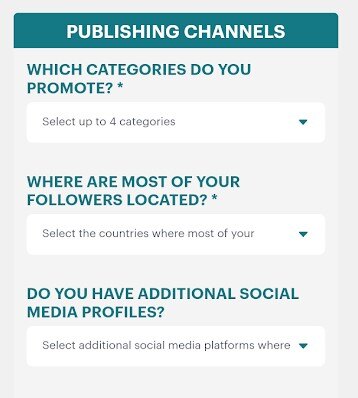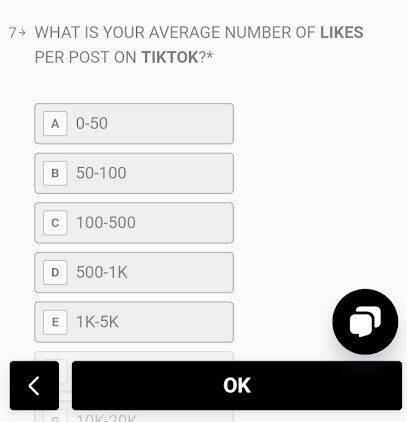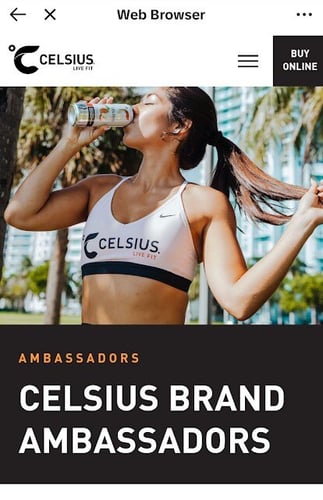
Flooded with influencer applications?
Given how brands struggle to find influencers, that's not a bad problem to have!
Still, more applications mean more legwork as you build your influencer community.
Vetting influencers for your program is a necessary but tedious process. The same applies to how you intake information like addresses, birthdays and preferred brands. All necessary but super time-consuming, too.
Having a streamlined strategy for influencer approvals and rejections is crucial. Especially if you want to scale your program to 100s of creators.
In this post, we break down four strategies to help you grow your influencer program by approving and rejecting creators faster.
1. Revamp Your Influencer Application and Request Forms
Accepting inbound influencer requests via application forms is the first step here.
Of course, these forms can also attract freebie-hunters, irrelevant creators and spam.
Anything you can do to reduce junk requests is a plus. Setting up your influencer application form is your first line of defense. Not to mention attract more relevant creators as a bonus.
Adding required fields to your application is a solid way to attract relevant creators. This can help you filter out those who aren't a good fit by default. For example, you can require influencers to answer questions related to:
- Engagement rate
- Follower count
- Examples of past promotional posts for brands
By asking for specific details upfront, you can quickly identify serious candidates.
Some brands use affiliate applications to segment influencers based on social channels. You may have separate applications for TikTok and Instagram, for example. This helps ensure you connect with creators who align with your brand’s influencer campaigns.
Note how Function of Beauty has an affiliate application that segments influencers based on social channels and preferred industry categories.

Meanwhile, Princess Polly has specific requirements and expectations regarding follower count and engagement rate for brand ambassadors and influencers.

And sure, longer applications will be tedious for some creators.
But food for thought: anyone serious about a collaboration will gladly fill them out.
Our take? Ensure that your applications are thoughtful without being overwhelming. A combination of open and close-ended questions can help you gather what you need.
2. Set Up Automated Rejections to Reduce Irrelevant Influencer Requests
Automating tasks like approvals or rejections is understandably controversial.
However, it may make sense depending on your influencer program's size and scope.
Some marketers are staunchly against auto-rejections and we get it. For example, you might end up rejecting a great creator who made a small mistake on their application.
But let's if you're receiving a consistent stream of applications, though. Like dozens or hundreds per day. Influencer approvals can quickly eat up your schedule. That's why in some cases, automating rejections might be necessary or at least worth testing.
Some influencer management tools have this feature, as do affiliate program tools. Here’s an example from Tapfiliate:

But auto-approving all influencers isn’t ideal when it leads to unqualified candidates.
There's a middle ground, though. Consider using auto-rejections to eliminate obvious spam while still manually reviewing promising applications. By setting clear parameters, you can streamline your workflow without sacrificing quality.
Think: you can set auto-rejection criteria for those who don't meet your minimum follower count or engagement rates. On the flip side, applications that meet your criteria can be flagged for manual review. This approach means that you are only spending time on potential high-quality influencers.
3. Funnel All Inbound Influencer Applications to One Place
This is a super straightforward step for growing your influencer program.
But you'd be surprised at how few brands think do it!
Bouncing between multiple inboxes is a no-go. Instead, promote a single, dedicated form for influencer applications. You can promote that same form on your social landing page, bio links and beyond. This prevents people from trying to DM, email, or use generic contact forms to request collabs.
For example, Celsius has dedicated sign-ups for their ambassador program on both TikTok and Instagram.


Despite being on different platforms, all requests get funneled to one landing page, making it easier to manage and review them efficiently.

Using a centralized system also allows you to track the status of each influencer request. You can easily see which applications are pending review, which have been approved, and which have been rejected. This can help you stay organized and ensure that no applications slip through the cracks.
Note that if you consolidate your applications into a platform in bulk, you may be able to approve or reject them in bulk as well. Influencer management platforms and CRMs can also help you take your accepted applications and current influencer roster to manage programs without endless back-and-forth. By reducing manual messaging, you can manage your influencer program more efficiently.
4. Source New Influencers Through Pre-Negotiated Collabs
Building an always-on influencer program and community means never running out of creators to partner with. The quicker you can onboard them, the better.
Consider pre-negotiated collaborations with vetted creators as an effective way to scale your influencer community.
For example, Statusphere’s micro-influencer marketing platform gives brands the ability to upload their own influencer lists and onboard new creators who’ve been vetted by our team. Contrast this with influencer platforms and databases that provide you with an unvetted “list” and leave the legwork with you.
.jpg?width=475&height=342&name=influencer%20segmentation%20example%20(for%20blog).jpg)
Using an approved network of vetted influencers can save you time and effort. These networks often have pre-negotiated terms and conditions, making the onboarding process smoother. Additionally, they can provide you with lookalike audiences that match your brand’s criteria, ensuring that you’re connecting with the right creators.
Again, eliminating manual influencer vetting and recruiting is key to saving time. While some brands may hesitate to outsource this step, the right platform and tools can make it happen with confidence. For example, our platform only matches brands with lookalike influencers using 250+ first-party data points.
How to Manage Your Influencer Program More Efficiently
There’s no denying the amount of legwork that goes into managing creators or building an influencer community.
And every minute counts when it comes to making the most of your creators.
That’s why speeding up processes like approvals and rejections should be a top priority for brands of all sizes.
Because the more time you free up from your schedule, the more time you can spend on optimizing your campaigns and building relationships with your influencer community.
And that’s where Statusphere’s influencer marketing software can help.
Again, our platform serves as an all-in-one influencer management tool for brands to build and manage their communities at scale with minimal legwork. We eliminate time-consuming communication and automate the process of getting products into vetted creators’ hands ASAP.
Want to see how our platform works? Get in touch with one of our experts to see how Statusphere's software can help your brand build authentic connections with creators at scale.
